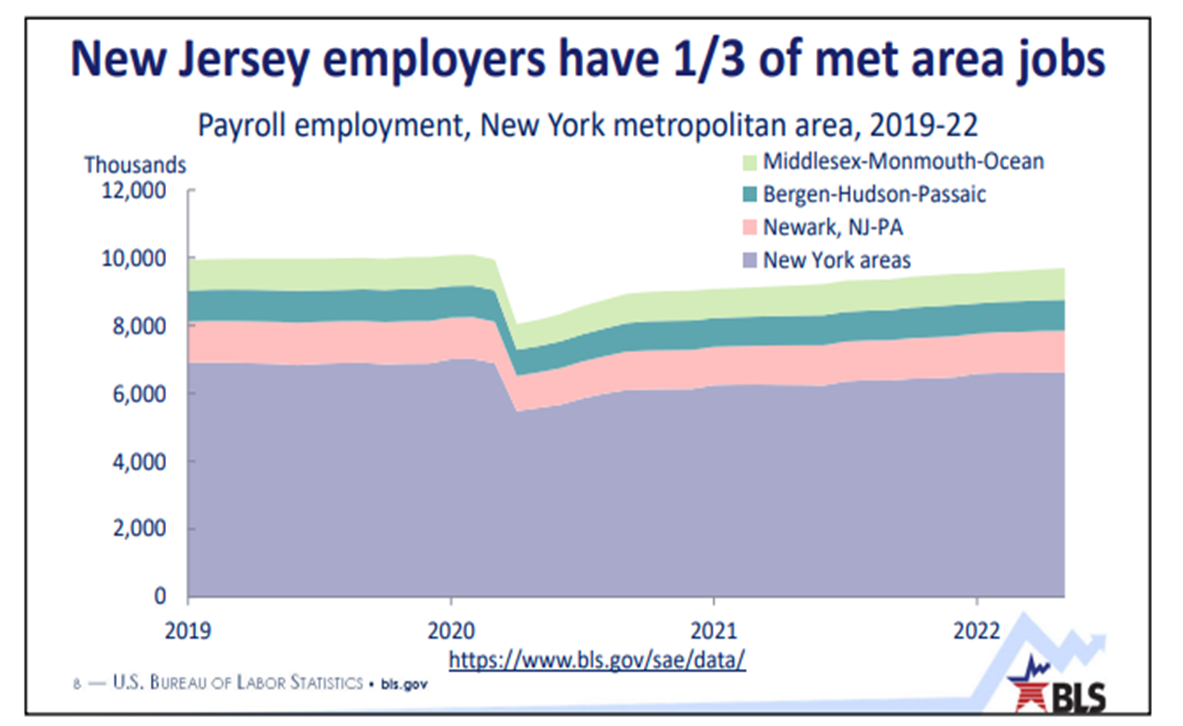Key Take Aways from Northern New Jersey’s July 2022 Meeting
- According to Gregg Manzione (Nationwide Consulting), the uptick in interest rates is slowing the residential and industrial markets although both remain strong. His industrial clients are still very busy, and many have 1031 money left to invest. Pricing is still strong and there’s a lot of demand for old industrial properties in the Port, airport and Meadowlands areas, with the goal to invest now and ultimately tear down and redevelop. He compared the retail sector to the “wild west” – some suburban shopping strip malls that have been half vacant for years are now closing on 1500 SF spaces at $30/SF, while 9 or 10K SF anchor tenants are paying $15/SF. He’s seen the same happening in retail centers in Newark.
- Tony Ianuale (Dresdner Robin) reported that while Amazon has been pulling back on some warehouse spaces, their new warehouse/retail combo, Amazon Fresh, is ramping up. Projected NJ locations are in Paramus (at the former Fairway site), Warrington, Eatontown, and Woodland Park. His firm has been hiring more people (including one or two remote workers); the current job market is very competitive; candidates are seeking new positions with more or different opportunities. On the client side, DR’s business and government client work has not slowed. Half of their workflow is currently centered on infrastructure, the other half on planning and design. It is too early to foresee any effects on construction for these current projects since that phase is two years out.
- John Tregidgo (Dresdner Robin) noted that while he is not seeing a lot of refinancing for Phase One projects, there are still a significant number of childcare projects in work. On the environmental side, the emergency flood hazard standards he reported on last month have not yet been implemented by the NJ DEP.
- Greg Gloor (Dresdner Robin) reported that there was a flurry of refinancing title and survey activity for commercial loans in the second quarter prior to the announced inflation rate hike. Greg noted that his office has received many inquiries on when the new storm flood elevation regs will go into effect. Apparently, the DEP has bumped the timing to the Fall.
- Greg James (NAI James E. Hanson) summarized the volatility of the financial market over the last few months, predicting that “stag-flation” will be an issue for the next 6 to 9 months as inflation continues to increase. In the last few months, borrowers have been experiencing massive sticker shock; consumers are scared as they see gas and food prices up 20% to 30% YOY. The cost of used cars and other commodities have skyrocketed.
- Bill Hanson (NAI James E. Hanson) told the group that his firm remains very active, with many projects in work and pricing unchanged; they have not yet seen the effects of the current inflationary market. However, they are cautious, cognizant that inflation is growing, consumer spending is already slowing down, and pricing will change. He agreed with Greg James that by September or November, the economic atmosphere will be different. He reported that the one of two Hackensack redevelopment projects under contract had been cancelled due to prolonged town negotiations over opportunity zone funding.
- Speaker: Bruce Bergman, Bureau of Labor Statistics. Bruce is the Regional Economist for NY-NJ Economic Analysis & Information Office
Highlights:
- Employment recovery in the NY area for 2021-2022 showed a lot of variation. Leisure & hospitality, which had lost the most jobs, rebounded at 25.2%; Financial (including real estate) maintained good growth; Trade, transportation & utilities (including retail) showed below average growth.
- Not all areas of the US recovered job loss. While 5 of 12 large metro areas recouped job loss, NYC showed 86% recovery; growth also varied among NJ counties, depending on industries present. NJ/NY also showed slower wage growth compared to nationally. A key factor in recovery is that 30% of consumer spending can be attributed to housing costs for rent, overall upkeep, taxes, etc.
- Quarterly census for employment and wages per county varied 6.9% to 4.8% or less based on industry mix per county. (Passaic, Essex and xx were above the high mark.) Overall NJ labor force measurement drills down to NAIC (job categories) in each county, as well as personal factors such as age, race, education.
- Currently, black Americans reflect the smallest population group but are over-represented in unemployment statistics. In some counties, the 55 and over age employment category is higher than the national average. Wages for the latter group may be disproportionately higher depending on industry/management positions, compensation, and bonuses. By 2030, the 55+ age group will be more than 25% of the workforce. Real estate employment growth is projected to slow to 0.6% annually for 2020-2030, compared to the 2.0% growth rate for 2010-2020.






Recent Comments